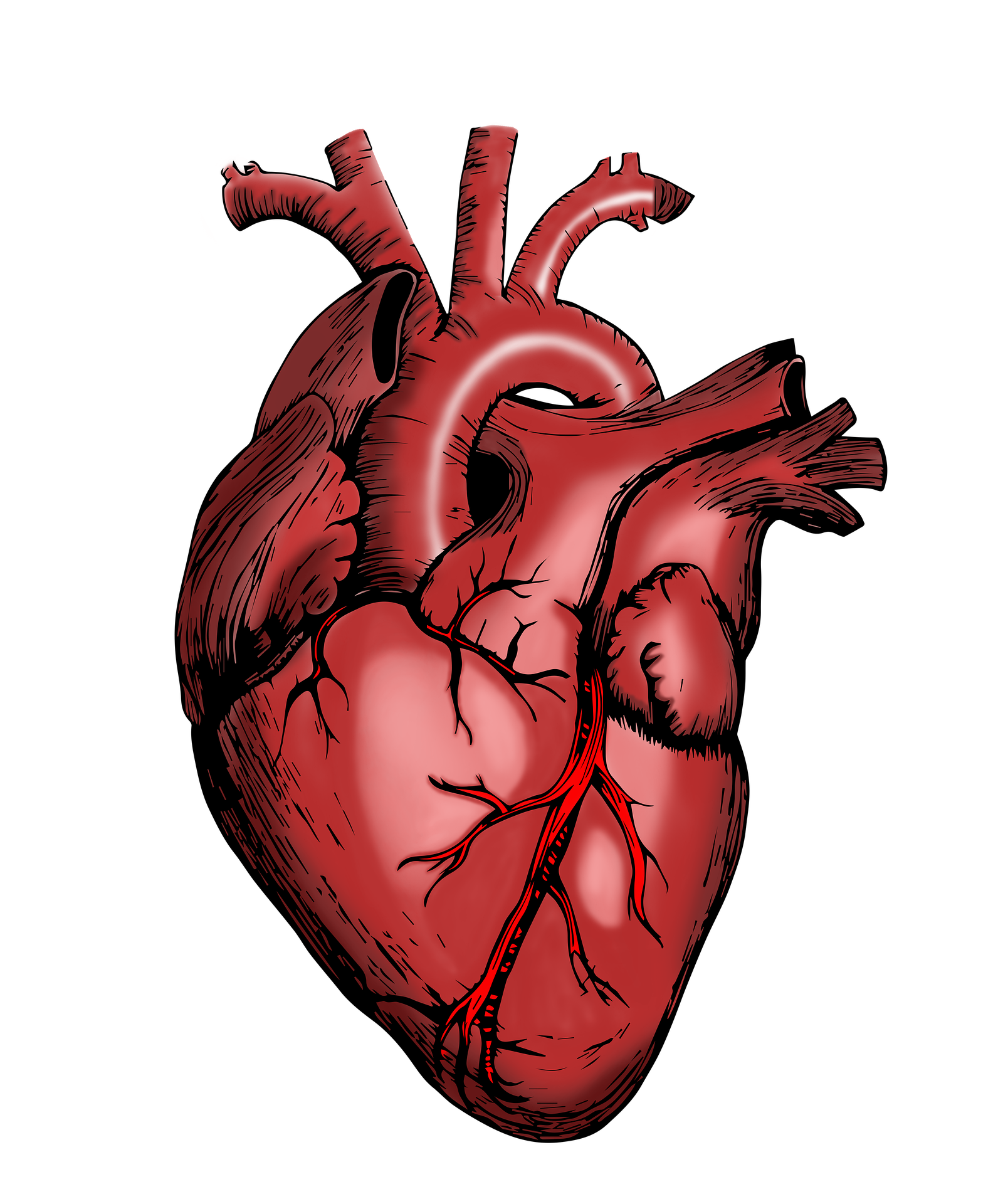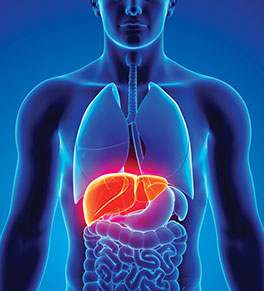Human Body Quiz: Body Parts And Organs Test
(555).jpg)
What do you know about human body parts and organs? Take up this test and check how well you know about the human body. In this quiz, you'll be asked questions like what is the pumping organ in our body and what are internal and external organs? If you have studied these topics earlier, you can quickly secure good marks on this test. Shall we begin the quiz now? Best of luck to you, guys!
- 1.
Identify the Organ
Explanation
The organ being identified in this question is the heart. The heart is a vital organ in the human body that pumps blood throughout the circulatory system. It is responsible for supplying oxygen and nutrients to the body's tissues and organs. The heart is located in the chest, between the lungs, and is approximately the size of a fist. It consists of four chambers - two atria and two ventricles - and is made up of cardiac muscle tissue.Rate this question:
- 2.
Identify the Organ
Explanation
The organ identified in this question is the liver. The liver is a large, reddish-brown organ located in the upper right side of the abdomen. It plays a vital role in the body's metabolism, detoxification, and production of bile. It also stores vitamins and minerals and helps in the digestion of fats. The liver is essential for maintaining overall health and is involved in various physiological processes within the body.Rate this question:
- 3.
Parts that we can see
- A.
Internal Organs
- B.
External Organs
- C.
Both
- D.
None
Correct Answer
B. External OrgansExplanation
The question is asking about the parts that we can see. The options provided are internal organs, external organs, both, or none. The correct answer is "external organs" because these are the parts of the body that are visible to the naked eye. Internal organs, on the other hand, are located inside the body and cannot be seen without the use of medical imaging or surgery.Rate this question:
-
- 4.
Parts that we cannot see are
- A.
Internal Organs
- B.
External Organs
- C.
Both A and B
- D.
None of these
Correct Answer
A. Internal OrgansExplanation
The correct answer is "Internal Organs" because internal organs are located inside the body and are not visible from the outside. These organs include the heart, lungs, liver, kidneys, and intestines, among others. They are essential for the functioning of the body and are protected by the skeletal system and other structures.Rate this question:
-
- 5.
______________ is an important organ of our body and it is protected by the ______________
- A.
Heart, Muscles
- B.
Brain, Skull
- C.
Blood, Skin
- D.
Bones, Muscles
Correct Answer
B. Brain, SkullExplanation
The brain is a vital organ in our body responsible for controlling various bodily functions. It is encased and protected by the skull, which acts as a hard, bony structure surrounding the brain. The skull provides a strong barrier that shields the delicate brain from external injuries and trauma, ensuring its safety and proper functioning.Rate this question:
-
- 6.
Brain has ______________ parts
- A.
1
- B.
2
- C.
4
- D.
5
- E.
3
Correct Answer
E. 3Explanation
The brain has three main parts. These parts are the cerebrum, cerebellum, and brainstem. The cerebrum is responsible for higher cognitive functions such as thinking, memory, and problem-solving. The cerebellum controls coordination and balance. The brainstem controls basic functions such as breathing, heart rate, and digestion. Together, these three parts work together to ensure the proper functioning of the brain and the body.Rate this question:
-
- 7.
______________________ is a J-Shaped Bag
- A.
Liver
- B.
Pancreas
- C.
Stomach
- D.
Large Intestine
Correct Answer
C. StomachExplanation
The stomach is a J-shaped bag that plays a crucial role in the digestive system. It receives food from the esophagus and breaks it down using stomach acid and enzymes. The J-shape of the stomach allows it to expand and accommodate a large volume of food. It also helps in the mixing and churning of food, aiding in the digestion process.Rate this question:
-
- 8.
__________are a pair of spongy, sac like organs
- A.
Heart
- B.
Lungs
- C.
Kidney
- D.
Liver
Correct Answer
B. LungsExplanation
The lungs are a pair of spongy, sac-like organs located in the chest. They are responsible for the exchange of oxygen and carbon dioxide in the body. When we breathe in, the lungs take in oxygen from the air and deliver it to the bloodstream. At the same time, they remove carbon dioxide from the bloodstream and exhale it out of the body. The spongy texture of the lungs allows for a large surface area, which enhances their ability to efficiently exchange gases.Rate this question:
-
- 9.
_________________ is the Pumping Organ
- A.
Heart
- B.
Blood Pump
- C.
Arteries
- D.
Veins
Correct Answer
A. HeartExplanation
The heart is the pumping organ of the body. It is responsible for pumping blood throughout the circulatory system, delivering oxygen and nutrients to the body's tissues and organs. The heart consists of four chambers - two atria and two ventricles - that work together to ensure proper blood flow. The heart's rhythmic contractions, known as the heartbeat, are essential for maintaining circulation and overall body function.Rate this question:
-
- 10.
________________ is the example of internal organ
- A.
Eyes
- B.
Nose
- C.
Liver
- D.
Ear
Correct Answer
C. LiverExplanation
The liver is an internal organ located in the upper right side of the abdomen. It is responsible for various functions such as detoxification, metabolism of nutrients, production of bile, and storage of vitamins and minerals. Unlike the eyes, nose, and ear, which are sensory organs located externally, the liver is an internal organ that plays a vital role in maintaining overall health and well-being.Rate this question:
-
- 11.
Balloon is compared to ________________________
- A.
Heart
- B.
Liver
- C.
Lungs
- D.
Digestive System
Correct Answer
C. LungsExplanation
The balloon is compared to the lungs because both the balloon and the lungs expand and contract. When air is blown into a balloon, it expands just like the lungs do when we breathe in. Similarly, when the air is released from the balloon, it contracts, just like the lungs do when we breathe out. Therefore, the comparison between the balloon and the lungs is based on their ability to inflate and deflate.Rate this question:
-
- 12.
___________________ contains special juice
- A.
Stomach
- B.
Mouth
- C.
Brain
- D.
Pancreas
Correct Answer
A. StomachExplanation
The stomach contains special juice called gastric juice, which is essential for the digestion process. Gastric juice contains hydrochloric acid, enzymes, and mucus that help break down food and kill bacteria. This juice aids in the breakdown of proteins into smaller molecules and also helps in the absorption of certain nutrients.Rate this question:
-
- 13.
The Human Brain weighs about ___ kg.
Correct Answer
1.3Explanation
The human brain weighs about 1.3 kg. This is the average weight of an adult human brain. The brain is a vital organ that controls various functions in the body, including thinking, memory, and movement. It is composed of different regions that work together to process information and coordinate bodily functions. The weight of the brain can vary slightly among individuals, but 1.3 kg is a commonly accepted average weight.Rate this question:
- 14.
_________________________ are the three main parts of the Brain (In order, with spaces, and first letter should be capital)
Correct Answer
Forebrain, Midbrain, HindbrainExplanation
The three main parts of the brain, in order, are the forebrain, midbrain, and hindbrain. The forebrain is responsible for higher cognitive functions such as thinking, memory, and emotions. The midbrain serves as a relay center for sensory information and is involved in motor control. The hindbrain controls basic functions such as breathing, heart rate, and balance.Rate this question:
- 15.
When we breath in, Lungs becomes _______
Correct Answer
bigExplanation
When we breathe in, our lungs expand or become bigger. This is because the diaphragm contracts and moves downward, creating more space in the chest cavity. This expansion allows the lungs to fill with air, increasing their size.Rate this question:
Quiz Review Timeline +
Our quizzes are rigorously reviewed, monitored and continuously updated by our expert board to maintain accuracy, relevance, and timeliness.
-
Current Version
-
Jun 18, 2023Quiz Edited by
ProProfs Editorial Team -
Jun 02, 2022Quiz Created by
Alfredhook3
 Back to top
Back to top




